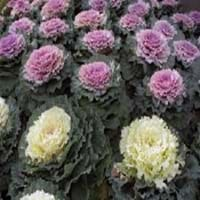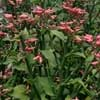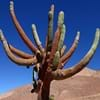Life Span
Perennial
Annual
Origin
Madagascar
Europe, Mediterranean, Canary Islands, Northern Africa
Types
Euphorbia tithymaloides tithymaloides, Euphorbia tithymaloides angustifolia
Not Available
Number of Varieties
Not Available
Habitat
subtropical regions, Tropical regions
gardens, Tropical regions
USDA Hardiness Zone
9-13
2-11
AHS Heat Zone
Not Available
6-1
Sunset Zone
H2, 13, 23, 24
A1, A2, A3, H1, H2, 1a, 1b, 2a, 2b, 3a, 3b, 4, 5, 6, 7, 8, 9, 10, 11, 12, 13, 14, 15, 16, 17, 18, 19, 20, 21, 22, 23, 24
Habit
Upright/Erect
Rosette/Stemless
Flower Color
Purple, Orange, Pink, Magenta
Yellow
Flower Color Modifier
Not Available
Bicolor
Fruit Color
Not Available
Brown
Leaf Color in Spring
Green, Gray Green, Burgundy
Dark Green
Leaf Color in Summer
Green, Gray Green
Light Green, Blue Green
Leaf Color in Fall
Green, Gray Green
Light Green, Blue Green, Pink
Leaf Color in Winter
Green, Gray Green
Light Green, Blue Green, Gray Green, Pink
Plant Season
Spring, Summer, Fall, Winter
Spring, Fall, Winter
Sunlight
Full Sun, Partial Sun
Full Sun, Partial Sun
Type of Soil
Loam, Sand
Loam, Sand
The pH of Soil
Neutral, Alkaline
Neutral, Alkaline
Soil Drainage
Well drained
Well drained
Bloom Time
Late Spring, Early Summer, Summer, Indeterminate
Spring, Late Spring, Early Summer
Tolerances
Drought
Drought
Where to Plant?
Container, Ground, Pot
Ground
How to Plant?
Seedlings, Softwood cuttings
Seedlings
Plant Maintenance
Medium
Medium
Watering Requirements
Average Water Needs, Do Not over Water
Keep the ground moist but not water-logged, Water occasionally, Water twice a day in the initial period
In Summer
Lots of watering
Lots of watering
In Spring
Moderate
Moderate
In Winter
Average Water
Average Water
Soil pH
Neutral, Alkaline
Neutral, Alkaline
Soil Type
Loam, Sand
Loam, Sand
Soil Drainage Capacity
Well drained
Well drained
Sun Exposure
Full Sun, Partial Sun
Full Sun, Partial Sun
Pruning
Remove damaged leaves, Remove dead branches, Remove dead leaves
Remove damaged leaves, Remove dead branches, Remove dead leaves
Fertilizers
All-Purpose Liquid Fertilizer
All-Purpose Liquid Fertilizer
Pests and Diseases
Red blotch
Red blotch
Plant Tolerance
Drought
Drought
Flower Petal Number
Single
Single
Foliage Texture
Bold
Bold
Foliage Sheen
Matte
Matte
Attracts
Hummingbirds
Bees
Allergy
Carcinogenic, Diarrhea, Skin irritation, Toxic
Skin irritation
Aesthetic Uses
Cottage Garden, Showy Purposes
Showy Purposes
Beauty Benefits
Skin Problems
Not Available
Environmental Uses
Air purification
Air purification
Medicinal Uses
Asthma, Emetic, Inflammation, Intestinal worms
Not Available
Part of Plant Used
Leaves, Root
Whole plant
Other Uses
Tea-like beverage can be brewed, Used as Ornamental plant, Used for its medicinal properties
Used as Ornamental plant
Used As Indoor Plant
No
No
Used As Outdoor Plant
Yes
Yes
Garden Design
Container, Houseplant, Mixed Border, Rock Garden, Wall, Tropical
Bedding Plant, Container, Edging, Edible, Herb / Vegetable, Mixed Border
Botanical Name
Euphorbia tithymaloides
BRASSICA oleracea 'Chidori Pink'( Acephala Group, CHIDORI SERIES)
Common Name
Devil's Backbone
Chidori Pink Ornamental Kale, Ornamental Kale
In Hindi
Devil's Backbone
सजावटी काले
In German
Devil's Backbone
Ornamental Kale
In French
Backbone du Diable
ornement Kale
In Spanish
El espinazo del diablo
Ornamental Kale
In Greek
Devil's Backbone
καλλωπιστικά Καλέ
In Portuguese
Espinha do Diabo
ornamental Kale
In Polish
Kręgosłup diabła
ozdobny
In Latin
Narum diaboli
decentius
Phylum
Magnoliophyta
Magnoliophyta
Class
Magnoliopsida
Magnoliopsida
Order
Malpighiales
Brassicales
Family
Crassulaceae
Brassicaceae
Clade
Angiosperms, Eudicots, Rosids
Angiosperms, Eudicots, Rosids
Tribe
Euphorbieae
Not Available
Subfamily
Euphorbioideae
Not Available
Number of Species
Not Available
Importance of Devils Backbone and Ornamental Kale
Want to have the most appropriate plant for your garden? You might want to know the importance of Devils Backbone and Ornamental Kale. Basically, these two plants vary in many aspects. Compare Devils Backbone and Ornamental Kale as they differ in many characteristics such as their life, care, benefits, facts, etc. Every gardener must at least have the slightest clue about the plants he wants to plant in his garden. Compare their benefits, which differ in many ways like facts and uses. The medicinal use of Devils Backbone is Asthma, Emetic, Inflammation and Intestinal worms whereas of Ornamental Kale is Not Available. Devils Backbone has beauty benefits as follows: Skin Problems while Ornamental Kale has beauty benefits as follows: Skin Problems.
Compare Facts of Devils Backbone vs Ornamental Kale
How to choose the best garden plant for your garden depending upon its facts? Here garden plant comparison will help you to solve this query. Compare the facts of Devils Backbone vs Ornamental Kale and know which one to choose. As garden plants have benefits and other uses, allergy is also a major drawback of plants for some people. Allergic reactions of Devils Backbone are Carcinogenic, Diarrhea, Skin irritation and Toxic whereas of Ornamental Kale have Skin irritation respectively. Having a fruit bearing plant in your garden can be a plus point of your garden. Devils Backbone has no showy fruits and Ornamental Kale has no showy fruits. Also Devils Backbone is not flowering and Ornamental Kale is not flowering . You can compare Devils Backbone and Ornamental Kale facts and facts of other plants too.





